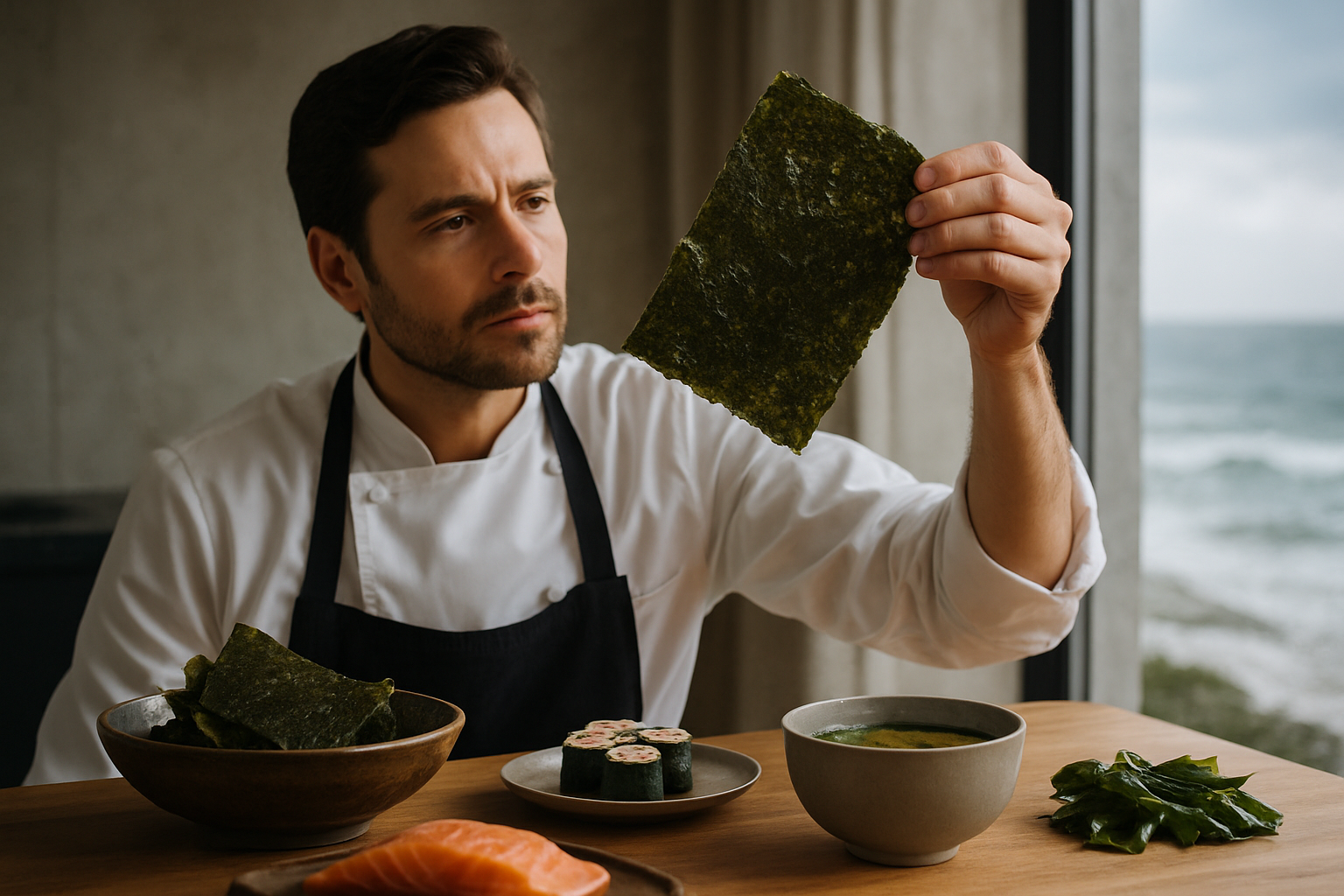Savory Seaweed: The Ocean's Umami Gift
Dive into the depths of oceanic flavors with seaweed, nature's briny treasure. This versatile ingredient is making waves in kitchens worldwide, offering a unique umami punch and a host of health benefits. From crispy snacks to luxurious broths, seaweed is transforming the culinary landscape. Let's explore how this sea vegetable is revolutionizing modern cuisine and why it deserves a spot in your pantry.

A Symphony of Flavors
The allure of seaweed lies in its ability to impart a complex umami flavor to dishes. This fifth taste, often described as savory or meaty, adds depth and richness to everything it touches. Dried seaweed flakes can be sprinkled over salads or rice bowls for an instant flavor boost. Kombu, a type of kelp, is essential in creating dashi, the foundational stock of Japanese cuisine. The subtle brininess of seaweed can elevate simple dishes, turning a plain bowl of miso soup into a comforting umami experience.
Beyond Sushi: Creative Culinary Applications
While many associate seaweed primarily with sushi rolls, innovative chefs are pushing the boundaries of its use. Seaweed butter is emerging as a luxurious spread, perfect for slathering on crusty bread or melting over grilled fish. Nori sheets are being transformed into crispy chips, offering a healthier alternative to traditional snacks. In fine dining, chefs are incorporating seaweed into unexpected dishes like seaweed-infused pasta or as a garnish for seafood platters, adding both visual appeal and a burst of ocean flavor.
A Nutritional Powerhouse
Seaweed isn’t just a flavor enhancer; it’s also packed with nutrients. Rich in iodine, essential for thyroid function, seaweed also contains high levels of vitamins A, C, and E. Its mineral content is impressive, offering calcium, iron, and magnesium. Many seaweeds are also good sources of protein and fiber, making them an excellent addition to plant-based diets. The unique compounds found in seaweed, such as fucoxanthin, have been studied for their potential anti-inflammatory and antioxidant properties.
Sustainable Seas: The Future of Food
As we look towards more sustainable food sources, seaweed emerges as a promising option. Seaweed farming requires no freshwater, fertilizers, or arable land, making it one of the most environmentally friendly crops. It also acts as a natural carbon sink, absorbing CO2 from the atmosphere. By incorporating more seaweed into our diets, we not only diversify our culinary experiences but also support a more sustainable food system. From kelp noodles to seaweed-based meat alternatives, the future of food might just come from the sea.
Seaweed Wisdom: Tips and Facts
• Store dried seaweed in an airtight container away from moisture to maintain its crispness.
• Soak dried seaweed in warm water for about 5 minutes before using in soups or salads.
• Experiment with different varieties like wakame, dulse, and arame to discover unique flavors.
• Seaweed is naturally high in sodium, so adjust salt levels in your recipes accordingly.
• Some seaweeds, like nori, can be toasted briefly to enhance their nutty flavor.
• Seaweed cultivation can help restore marine ecosystems and improve water quality.
In conclusion, seaweed is more than just a wrap for sushi; it’s a culinary adventure waiting to be explored. Its unique flavors, nutritional benefits, and sustainability make it a ingredient worth embracing in our kitchens. As we continue to seek out new and exciting flavors, seaweed stands ready to take us on a journey through the tastes of the ocean. Whether you’re a seasoned chef or a curious home cook, there’s never been a better time to dive into the world of seaweed and discover the umami treasures it holds.





